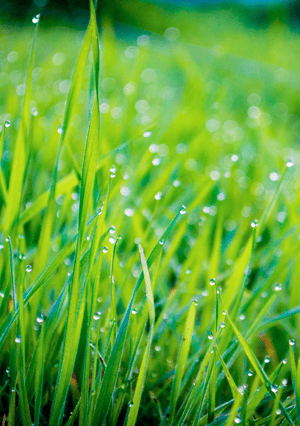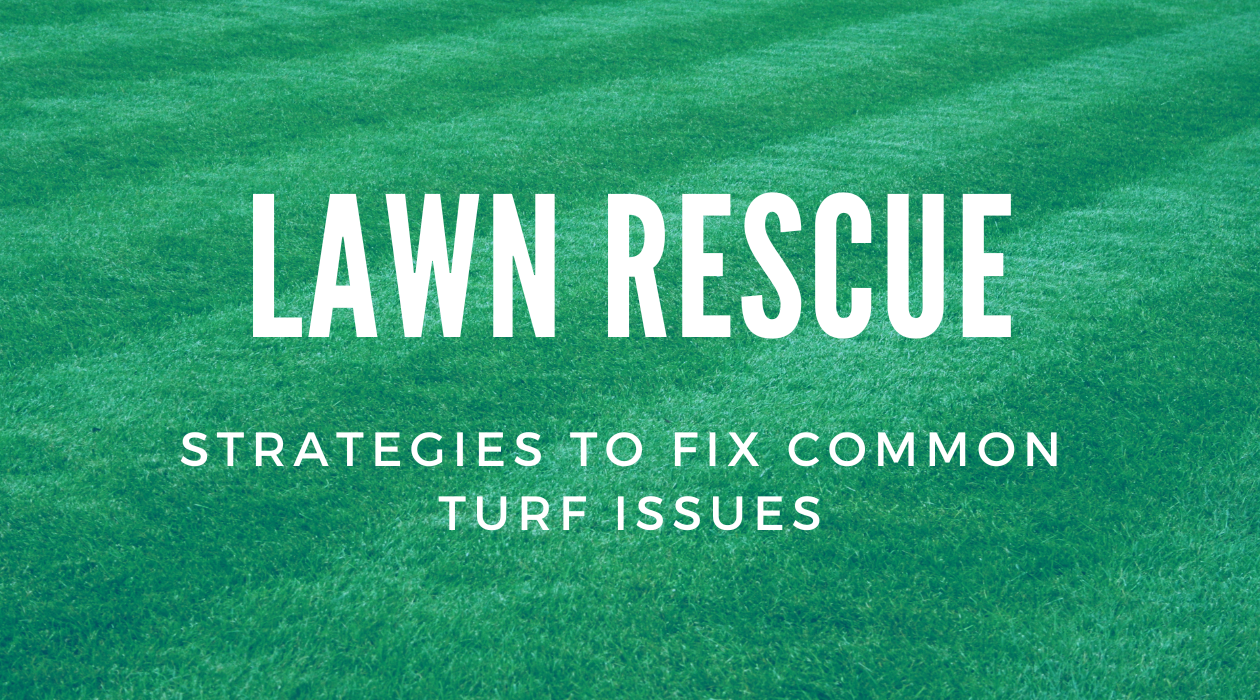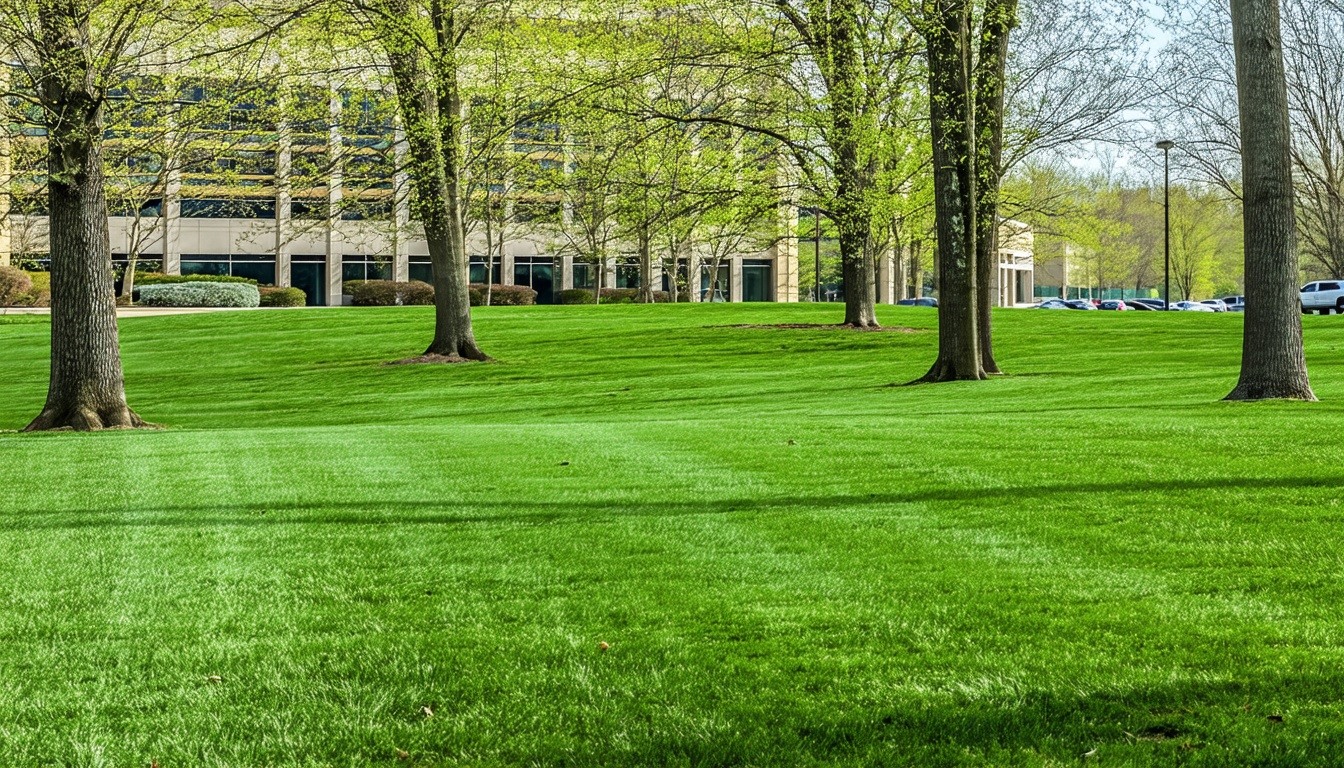When you think about it, you and your lawn have a lot in common. You both look better with a trim. And you both need water, food, and plenty of air to thrive.
For you, getting that oxygen flowing probably means a little cardio workout at your local gym. For your lawn? It’s all about aeration.
What Is Lawn Aeration?
Lawn aeration is a procedure where small, 2- to 3-inch deep holes are punched in the soil. These holes allow air, water and nutrients to get to the root zone of your turf.
 Aeration is performed using a piece of equipment called an aerator. There are two main types of aerators: spike aerators and plug (or core) aerators.
Aeration is performed using a piece of equipment called an aerator. There are two main types of aerators: spike aerators and plug (or core) aerators.
Plug aerators actually pull plugs of soil out of the ground. A spike aerator is just what it sounds like: it drives metal spikes into the ground to create holes, displacing the soil but not removing it.
In the South at least, plug aeration is the way to go. That is because with our clay soils, the spike method can actually increase compaction in your soil.
Lawn aerators are available in the lawn and garden sections of many of the big box stores or hardware supply stores. However it is not the same grade of equipment as what we use. Professional aeration equipment offers better soil penetration and closer plug spacing, which results in a much more thorough job for the time spent.
If you decide to aerate your lawn yourself, you’ll want to do it when your soil has some moisture in it. It should be just damp, not wet. You can wait for a light rain or water your lawn, and aerate once the grass blades are dry. The moisture will allow for better soil penetration, especially in clay.
Lawn Aeration Benefits
It should be no secret that lawn aeration can make your turf healthier. Just how much healthier? Here’s a closer look at some of the benefits of lawn aeration:
 Promotes Strong Roots
Promotes Strong Roots
Aeration stimulates roots to grow more deeply, which supports healthier, more vigorous turf growth.
Breaks Down Thatch
Thatch is the layer of dead grass that accumulates above the soil. Especially when it gets to be 1/2” or thicker, thatch is a great place for insects to hide.
Discourages Fungus
It also tends to hold onto water, keeping the root crown wet for long periods of time. Here in the South, where we have a lot of humid weather and plentiful rain, this is especially likely to cause fungal issues in your lawn.
Alleviates Soil Compaction
Compacted soil is hard for roots to penetrate. Clay soils, like the ones common in our area, are especially prone to compaction. Aeration helps to break up compacted soil and creates conditions that support optimal uptake of water and nutrients.
How Can I Tell When My Lawn Needs Aerating?
Here are four tell-tale signs that your grass is begging you to consider lawn aeration:
Lack Of Vigor
If your turf looks like it’s struggling and worn out, time to aerate.
Heavy Use
Turf that is subject to things like kids riding their bikes over it, equipment like golf carts or lawn mowers being driven on it, or pets running on it will need more frequent aeration. Pets in particular may be harder on your lawn than you think. Their small feet actually exert more pounds per square inch than larger equipment.
Recent Construction
The lawns of recently constructed homes have some of the worst compaction. Usually the topsoil on a building site is stripped off and spread back around later. Everything underneath is typically highly compacted by construction equipment. If you haven’t aerated since your home or building was built it’s way overdue.
Recently Installed Sod
Sod is very typically laid over compacted soil. Especially if your sod is not looking as good after installation as you expected, aeration can help it to establish itself better.
When Should Lawn Aeration Be Done?
Ideally, lawns should be aerated more frequently than most people assume. In clay soils, annually. In loamy, sandy soils every other year is good — unless you have a lot of traffic or tend to build up thatch. Then doing it every year is appropriate.
Timing is important. People do this wrong all the time. You want to aerate when your turf is actively growing, green and vigorous, not under stress. Usually in the South the best time of year is mid April through June.
The 411: What Else Should I Know About Lawn Aeration?
Weed Control Timing
When you aerate your lawn, it’s a good idea to also do weed control. Weeds are opportunistic, and they love aeration just as much as your turf does.
We like to do a pre-emergent slightly prior or just after aeration to knock the weeds back before they get a chance to establish themselves. Some folks say that aeration will break the herbicide pre-emergent barrier but research says that’s not true. After aeration is a good time to fertilize.
Dealing With Turf Plugs
After aerating, you can leave the plugs on your lawn or break them up. Professionals use a drag mat to do that. Some companies like to leave them so the homeowner can see the plugs. We prefer to break them up. Most plugs break up on their own within a week, but we have seen some hard clay ones that stick around much longer than that. It’s not the prettiest sight in the world.
Avoid Sprinkler System Damage
The other thing you’ll need to think about if you have an irrigation system installed is your sprinkler heads. An aerator that is good enough to do the job will also damage your sprinkler heads.
Same goes for anything else that is installed within the top 2-3 inches of soil on your lawn, such as cable TV wires and invisible pet fence. If you aerate your lawn yourself you will need to locate and avoid these things. A pro will do it for you.
Ready To Aerate Your Macon GA Lawn?
Some people enjoy aerating their own lawns. Others would rather spend the time at the gym. If you’re one of the latter, give us a call at 478-750-7733 or contact us online to have us take the job off your hands.Image: Grass droplets, Grass bubble
1 Oct 2024


 Promotes Strong Roots
Promotes Strong Roots


